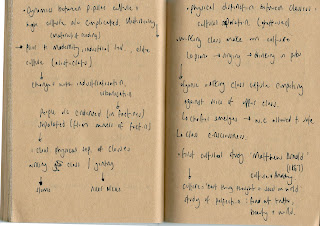The Marxist theory states that the superstructure transforms the substructure; the introduction of reproductive technologies has created a situation whereby the understanding of art has been affected. This loss of understanding has been due to the art of the proletariat bushing aside 'outmoded concepts, such as creativity and genius, eternal value and mystery', which are all values of Fascist art, thus bringing about revolutionary art. This new found ability to replicate works of art such as the 'Keep Calm and Carry On' design, has created the opportunity to overthrow capitalism. A copy of 'Keep Calm and Carry On' will begin to achieve power of its own through the reproductive technologies used to create it. The evolution of technical reproduction techniques, such as lithography and photography, enabled graphic arts begin to put 'products on the market.' Consequently, the 'Keep Calm and Carry On' design to shifted from being available to only a few, to being available to the masses. However, this mass reproduction of the 'Keep Calm and Carry On' design resulted in the reproduced artwork lacking 'it's presence in time and space' and 'it's unique existence at the place where it happens to be.' The 'Keep Calm and Carry On' design does not have the same impact nowadays as the morale boosting novelty poster the British Government intended during the war. It is the authenticity of the original that gives the copy value, however, 'technical reproductions can put the copy of the original into situations which would be out of reach for the original itself.' The 'Keep Calm and Carry On' design has been reproduced through a variety of different media, although the original was only produced as a poster campaign.
The reproduction 'Keep Calm and Carry On' design has become 'detached from the domain of tradition' through the original meaning being lost due to the mass application of the design. Although a reproduced 'Keep Calm and Carry On' items may not touch the original design, 'the quality of it's presence is always depreciated.' In having the reproduced 'Keep Calm and Carry On' designs in your home, it 'reactivates the object produced'; the designs are re-contextualised when put into this personal context and no longer have the same meaning as the original intended the design to. This 'shattering of tradition' challenges the single meaning of the 'Keep Calm and Carry On' design, disregarding the 'aura' in order to create an anti-authoritarian state; one of communism.
































